SINGAPORE: The expedition lasted two weeks. But it will take two years for the scientists to complete their studies of more than 12,000 specimens – some bizarre and new to science – hauled up from the bottom of the Sunda Strait and Indian Ocean.
These Indonesian waters off West Java had been largely unexplored by marine biologists until now. That changed in March, when a combined team from Singapore and Indonesia set out to sea.
“People have collected data off west of Sumatra, eastern parts of Indonesia and southeastern part of Java,” said Professor Peter Ng, head of the Lee Kong Chian Natural History Museum at the National University of Singapore (NUS).
“But for whatever reasons, the Sunda Strait in southwestern and southern Java were poorly collected. We had almost no information about the deep-sea animals living there.
So we thought, here’s a nice chance to fill the gap. We cannot conserve what we do not know.
Prof Ng, a well-known crab expert, led the 14-day South Java Deep Sea Biodiversity Expedition (SJADES 2018) with Professor Dwi Listyo Rahayu, a world authority on hermit crabs from the Indonesian Institute of Sciences (LIPI).
The research vessel with 31 scientists and support staff sailed from Jakarta towards Cilacap in southern Java and back, covering a total distance of 2,200km.
The team sailed anti-clockwise from Jakarta along Sunda Strait towards Cilacap in southern Java. (Image: SJADES 2018)
Using trawls, dredges, box corers and multicorers, the NUS-LIPI team collected marine animal samples at depths averaging 800m – the deepest was at 2,100m.
The result exceeded Prof Ng’s expectations: Over a dozen new species of hermit crabs, prawns, lobsters and crabs were found, and more than 40 species of various kinds are new records for Indonesia.
Here are some of them, in photos.
DECORATOR CRABS (New to science)
Three new species of bizarre-looking spider crabs were found – all in the deep waters of southwestern Java.
They were immediately recognised as unique species by Prof Ng and Dr Bertrand Richer de Forges from France, both of whom have been studying this group of crustaceans for over three decades.
“Big Ears”. Size: 6cm. From depth: more than 1,000m. (Photo: SJADES 2018)
This yet-to-be-named crab was found camouflaged with detritus, small zoanthid anemones and mud. It has a distinctive plate that resembles oversized ears adjacent to its red eyes.
“Spiky”. Size: 8cm. From depth: 800m. (Photo: SJADES 2018)
A orange species with many strong spines. Only one specimen of this rare species was obtained.
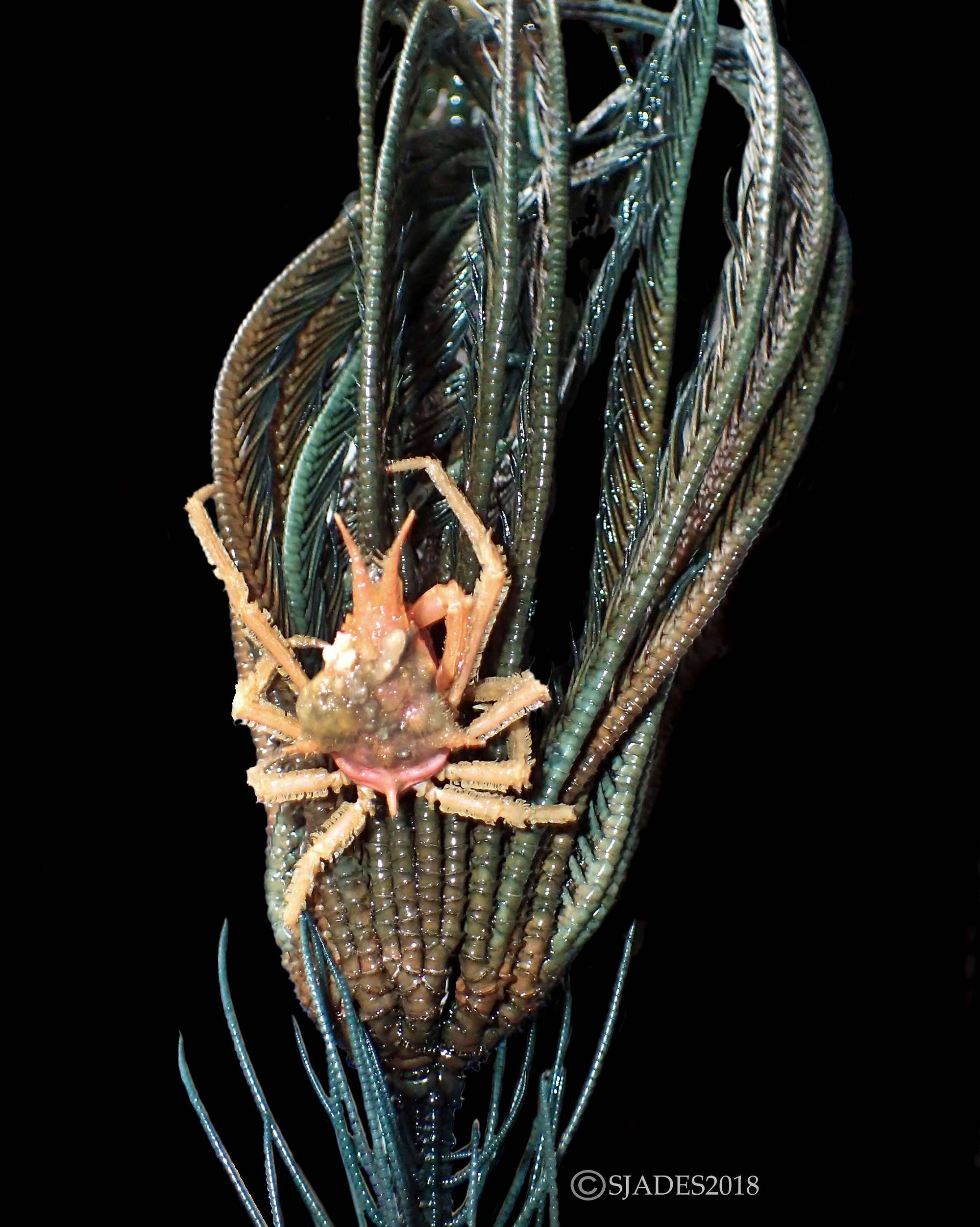
“Clinger”. Size: 6cm. From depth: 800m to 1,200m. (Photo: SJADES 2018)
A decorator crab with a more elongated form. Several specimens were found clinging to stalked sea lilies, a living fossil. Scientists are still not sure if this is their only habitat, but they do believe these crabs have a preference for these sea lilies.
Why do these crabs decorate themselves when there is no light in the depths of the ocean?
That is because “a whole bunch of animals are using sound”, said Prof Ng. “They hit you with sonar. Which means that even if they can’t see you, you don’t want to look like a crab, you want to look like a blob of sponges.
Even in the deep, it pays that you try to pretend to be something you’re not.
HERMIT CRABS (New to science or new for Indonesia)
Hermit crabs live solitary lives protected by shells. They are a major component of the deep-sea fauna and appear in almost every catch.
These animals come in a surprising diversity of form, shape and sizes. During the expedition, Prof Dwi found over 40 hermit crab species, many of which look nothing like the typical hermit crabs found in shallow waters and on land.
Some are very skinny because they live in hollow twigs. Some resemble small lobsters – they burrow into wood. Others live inside swollen sea anemones.
A new species of hermit crab with jade-green eyes. Size: 3cm. From depth: about 200m. (Photo: SJADES 2018)
Hermit crabs are mostly found in the shallow waters. There are few species in deeper waters, so the discovery of this new species is noteworthy.
The bright green eyes and distinctly patterned granulated pincers are distinctive for this new species. Professor Dwi immediately recognised it as something she has never seen before.
A hermit crab species newly recorded in Indonesia. Scientific name: Xylopagurus cf. philippinensis. Size: 12 to 15cm. From depth: 370m (Photo: SJADES 2018)
This slender twig-dwelling hermit crab with a straight body has adapted its body to live inside the narrow cavities of hollow twigs and sticks.
GIANT SEA COCKROACHES (New to science)
The expedition found a new species of Bathynomus, which is 30cm in length.
A new species of Bathynomus or giant sea cockroach. Size: 30cm. From depth: 1,300m. (Photo: SJADES 2018)
Also called giant sea cockroaches, they are important deep-sea scavengers. They feed on dead animals that sink to the ocean bottom, and are an integral part of the ecosystem there.
However, Bathynomus had not been officially recorded in Indonesia before.
There are 18 species globally, 15 of which reside in the Indian and Pacific Oceans. Among these, the most famous are eight species which experts have called “supergiants” because they reach sizes of 50cm in length.
WATCH: Meet the critters (3:24)
The two chief scientists were excited, and their check of the literature indicated that the “supergiant” species collected was quite different from known species – they may well be new.
SHRIMPS & LOBSTERS (New to science)
Also on the expedition was Professor Chan Tin-Yam from the National Taiwan Ocean University, a world expert in deep-water shrimps and lobsters who, with his team, discovered five new species.
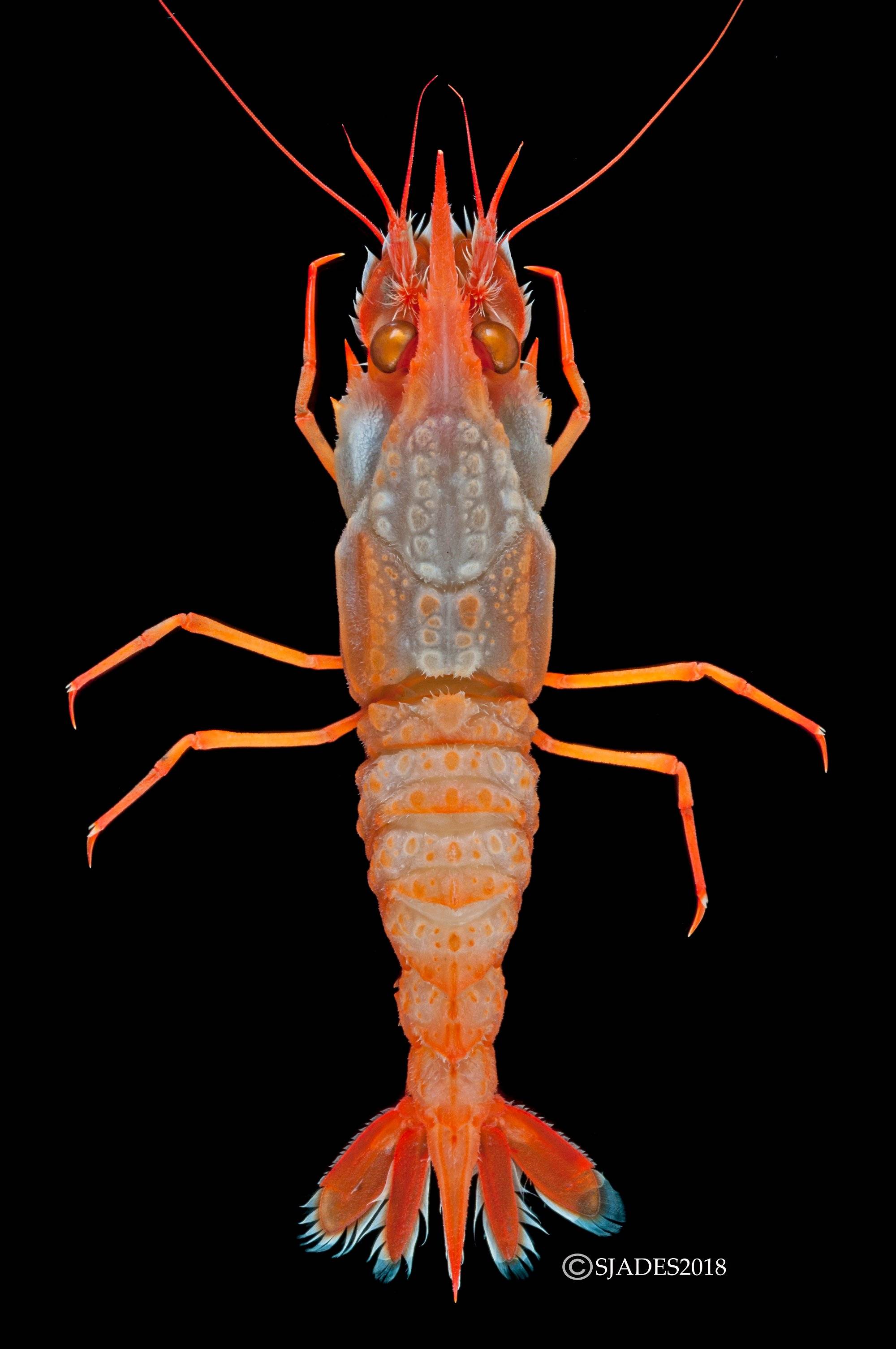
A new shrimp species. Size: 8cm. From depth: 1,013m. (Photo: SJADES 2018)
A new shrimp species with shiny eyes. These bottom-dwelling shrimps possess unique mechanisms to lock their abdomens to protect against predators.
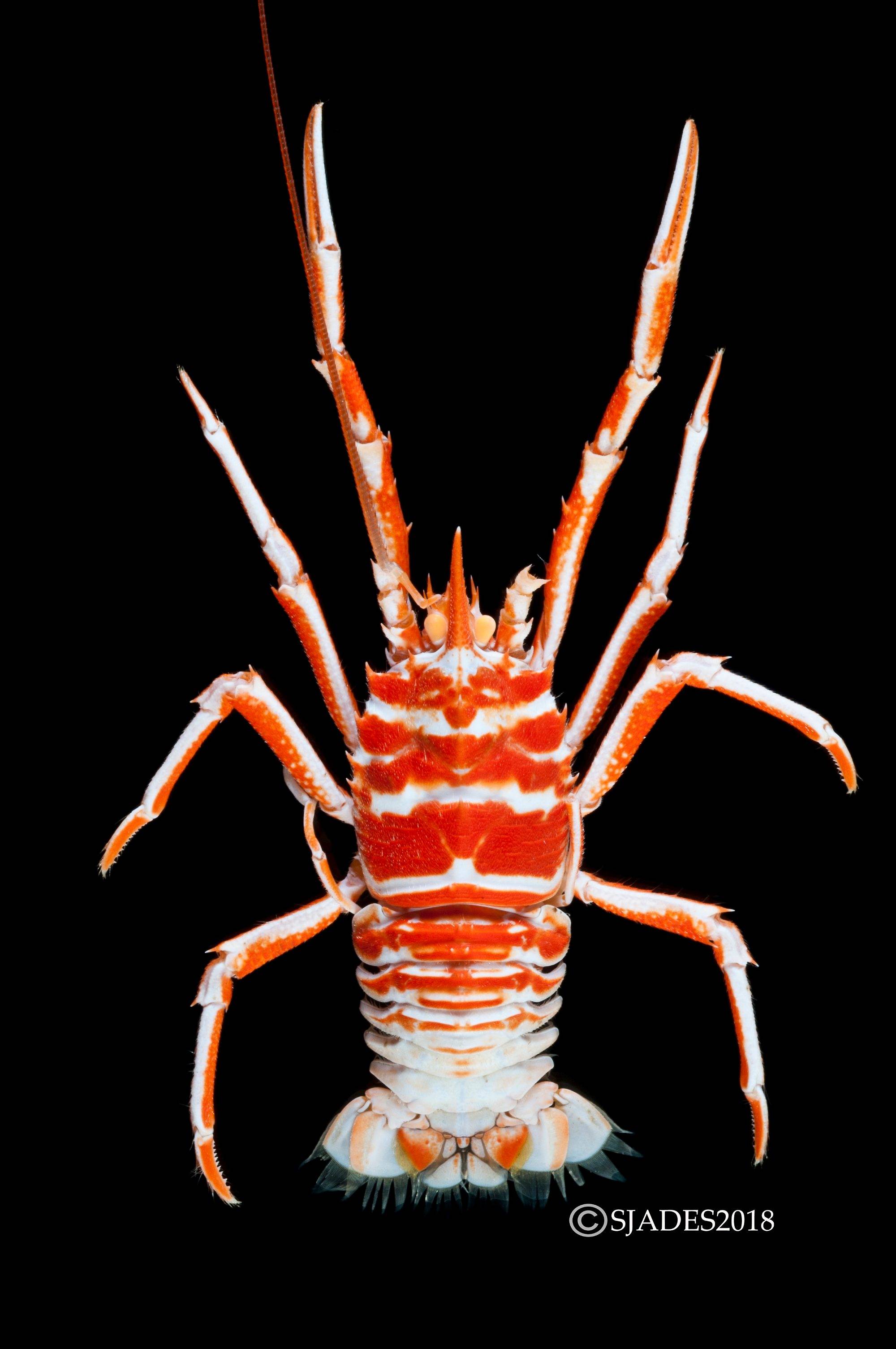
A new species of squat lobster. Size: 8cm. From depth: 525m. (Photo: SJADES 2018)
This was among the 20 species of squat lobsters found by scientists on the expedition. This species has a distinctive zebra pattern on its body.
GOBY FISH (New to science?)
A goby species that may be new to science. Size: 5 to 6cm. From depth: 182m. (Photo: SJADES 2018)
Gobies are mostly found in shallow intertidal waters, but some can be found in much deeper waters of almost 200m, like the specimen in the photograph, which was collected from the Sunda Strait.
This strange goby is flat-headed, and has very enlarged otoliths (ear stones for balance) behind the eyes. There are currently three known species in the world, and scientists are examining whether this specimen is one of them – or new to science.
OTHER INTERESTING FINDS
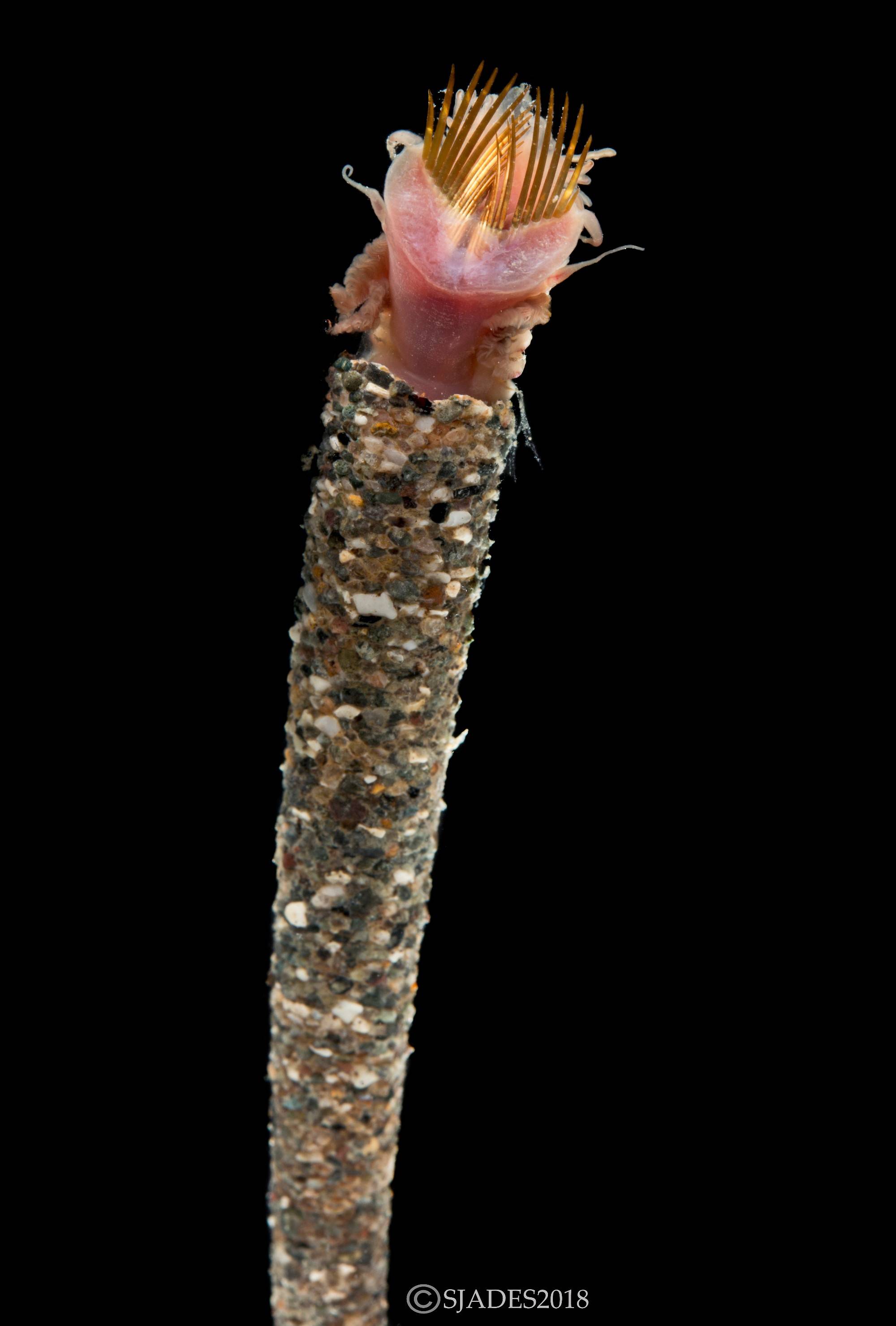
The ice-cream cone worm. (Photo: SJADES 2018)
This 6cm deep-sea tube-dwelling worm pastes sediment grains with their tentacles to the pre-existing conical tube as they grow, forming a structure which resembles an ice-cream cone.
A peculiar scallop. (Photo: SJADES 2018)
This deep sea scallop has some peculiar habits. Scientists believe it is carnivorous, feeding on very small animals.
In addition, it almost has a sea anemone attached to one of its valves – presumably for protection.
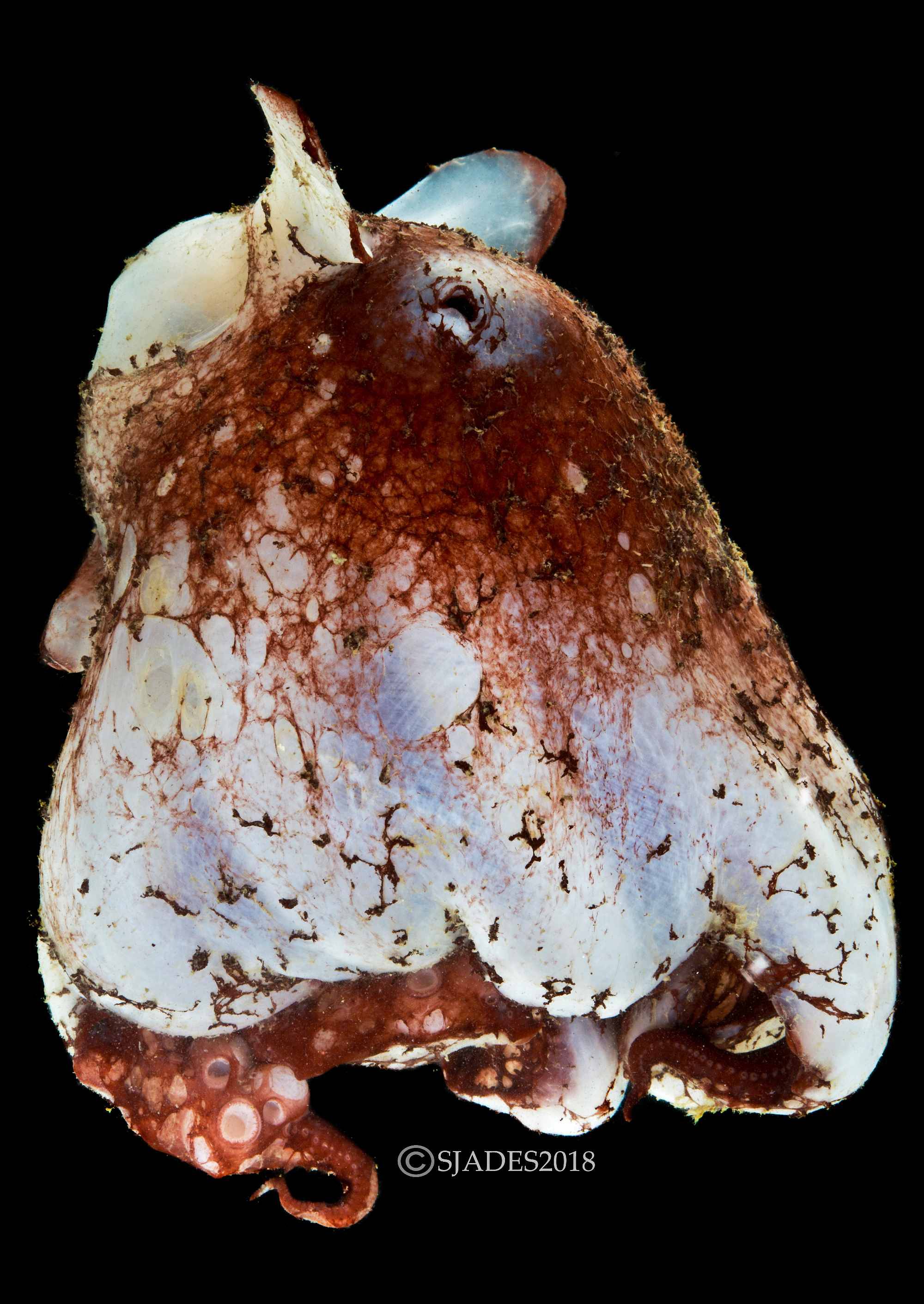
Dumbo octopus. (Photo: SJADES 2018)
Nicknamed the Dumbo Octopus because of its resemblance to the beloved Disney character, this animal has a jelly-like feel and was dark purple when first observed in the trawl net.
It swims using the two large flaps on its head.
A cock-eyed squid. (Photo: SJADES 2018)
This peculiar squid measuring some 8cm has one eye much larger than the other.
It apparently swims with the larger eye looking downwards for food, whilst the smaller eye peers upwards presumably watching out for predators.
Blood shrimp. (Photo: SJADES 2018)
A brightly coloured shrimp that was caught alive. It regurgitates a bioluminescent cloud to confuse predators when disturbed – a habit shared with several other species of deep-sea prawns.
Chain-saw lobster. (Photo: SJADES 2018)
Nicknamed the chain-saw lobster, this is a rare deep-sea blind lobster with scary right claws lined with many sharp teeth.
Scientists, however, suspect that the claw is not a predatory device but acts to sieve bottom substrates for small animals to eat.
These lobsters are rarely collected because they dig deep burrows.
A tripod wonder. (Photo: SJADES 2018)
The deep-sea tripod fish has peculiar fins and filaments that help it balance and detect small prey swimming past. It has eyes that have no lenses, so it’s unable to focus on objects.
Last but not least, they are hermaphrodites. These odd features help it survive in perpetual darkness.
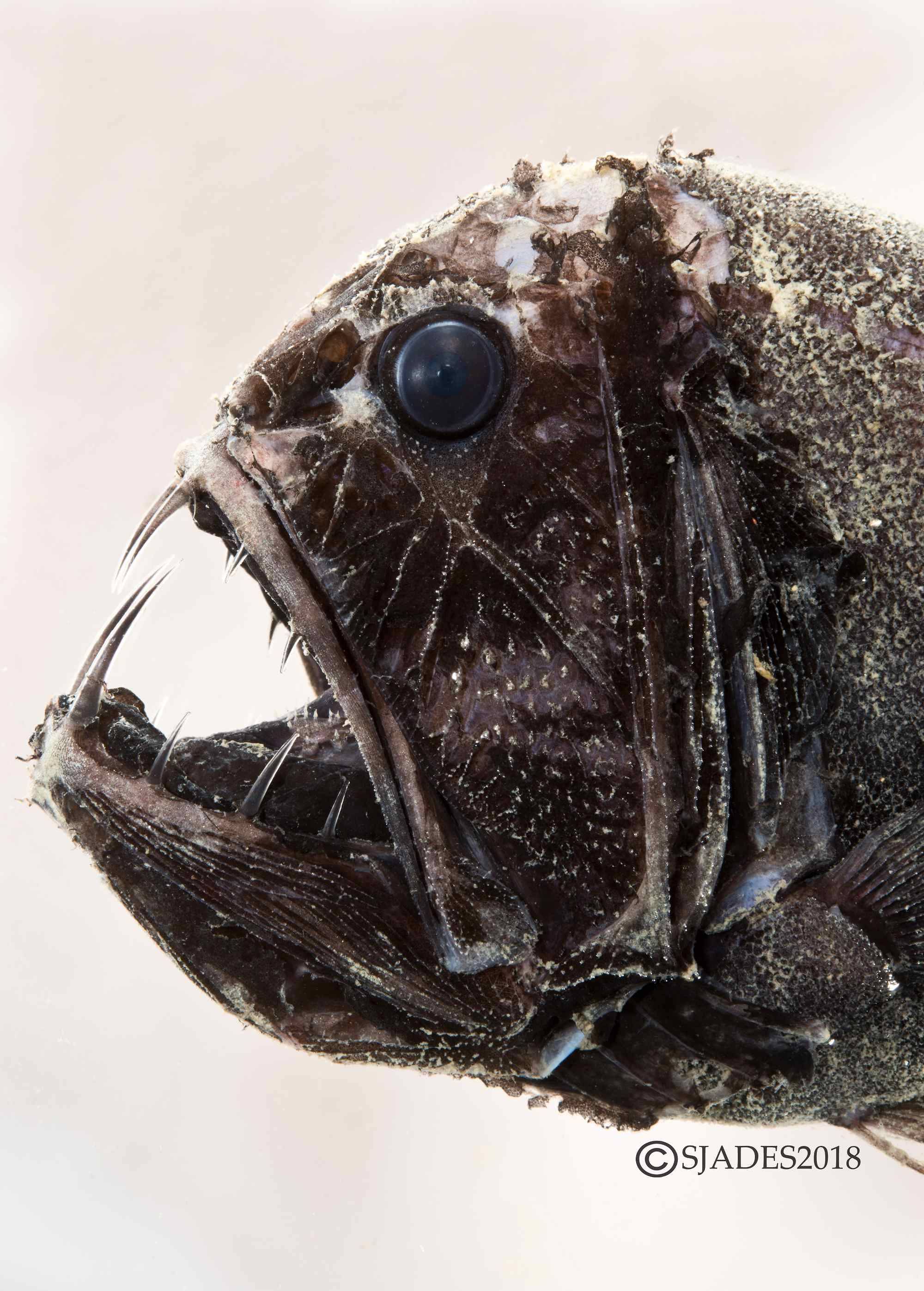
Fang tooth. (Photo: SJADES 2018)
The aptly named Fang Tooth has wicked-looking long teeth. No escape for any prey that gets into this mouth.




